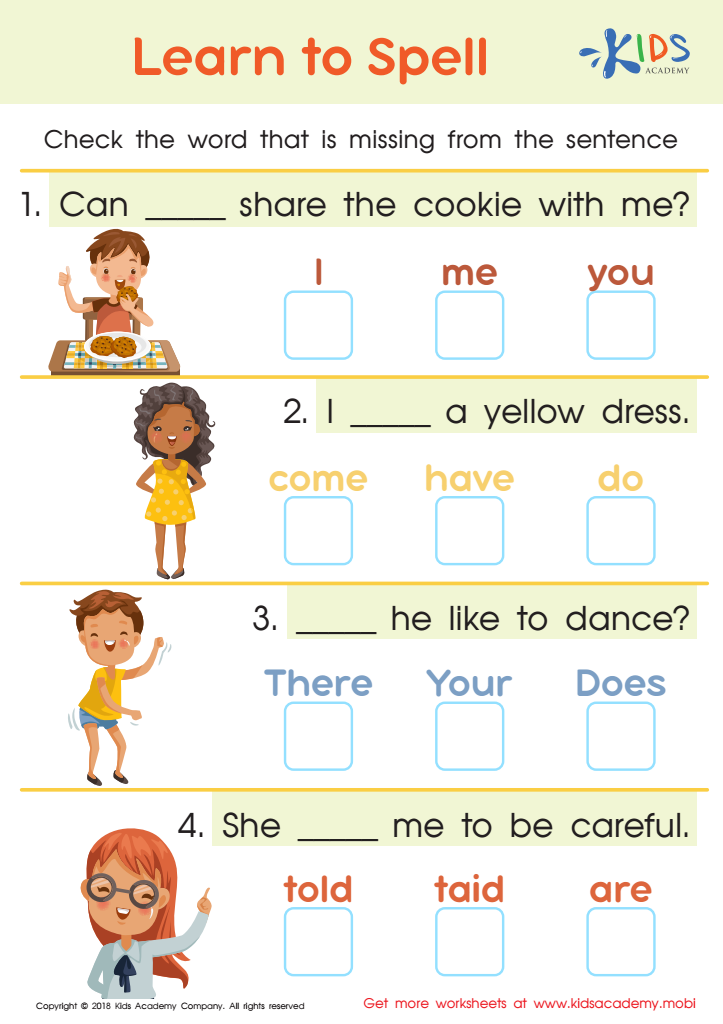Alphabetical ordering skills Worksheets for Kids
1 filtered results
-
From - To


Learn to Spell Worksheet
Question/Answer
How does the mastery of the Alphabetical ordering skill affect a student's performance at an early age?
Mastery of alphabetical ordering at an early age significantly enhances a student's reading and writing abilities. It improves word recognition, spelling accuracy, and vocabulary development. This foundational skill also aids in efficient dictionary and index use, fostering greater independence in learning. Overall, early mastery positively impacts academic performance and literacy skills, setting a strong basis for future educational success.
Why is the Alphabetical ordering skill important for Grade 1 students?
The alphabetical ordering skill is important for Grade 1 students because it forms the foundation for literacy. It helps them understand how books, dictionaries, and other resources are organized, making it easier to learn to read, write, and navigate information. This skill also aids in developing organizational habits and enhances their ability to categorize and retrieve information efficiently.
How to test a Grade 1 student’s Alphabetical ordering skills?
To test a Grade 1 student's alphabetical ordering skills, provide them with a mixed set of letter cards or words. Ask them to arrange the cards or words in the correct alphabetical order. You can start with short sequences and gradually increase complexity by adding more letters or words, including those that start with the same letter.
 Assign to the classroom
Assign to the classroom











